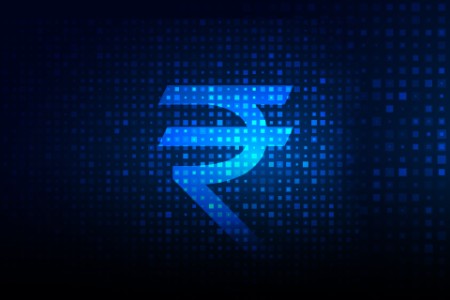Size of digital economy in India
As per the RBI,5 the share of India’s core digital economy6 increased from 5.4% of GVA in 2014 to 8.5% in 2019. In US dollar terms, India’s digital economy exhibited a growth rate of 15.6% over the period 2014 to 2019, which was 2.4 times the growth of the Indian economy. Further, the share of digitally dependent economy (digitally enabled sectors) is estimated at 22.4% in 2019.
RBI has also decomposed the overall output multiplier into digital and non-digital output multipliers. The output multiplier is defined as capturing the direct and indirect impact of a unit change in final demand covering digital and non-digital sectors on the economy’s total output. The RBI then estimated separately the digital and non-digital output multipliers for 2014 and 2019. It is shown that while the non-digital output multiplier fell from 1.68 to 1.57 during this period, the digital multiplier increased from 1.34 to 1.50.
A recent study by MeiTY (2019) has estimated the size of India’s digital economy at US$200 billion in 2019, which is expected to rise to US$500 billion by 2025 in their ‘business as usual’ scenario. However, they also point out that potentially, the size of India’s digital economy can be increased up to US$1 trillion by following a set of policy initiatives covering 30 digital themes under 9 national goals: (1) 21st-century IT infrastructure and software capabilities, (2) E-governance of the future, (3) Healthcare for all, (4) Quality education for all, (5) Energy for all, (6) Next-generation financial services, (7) Doubling farmers’ income, (8) Make in digital India, make for India, make for the world and (9) Jobs and skills of the future.
Impact on employment and growth
The RBI report points out that employment in the digital sectors of the Indian economy is still quite limited. Based on India’s current population (2022) and the worker population ratio in 2019-20 as per Periodic Labour Force Survey (at 38.2%), the total employed workers in the core digital economy were estimated at 4.9 million. Among the digital sectors, the highest share of employment at 59.8% is for the computer programming consultancy and related activities followed by telecommunication services at 15.2%.
India’s explosive growth of the digital economy is itself going to serve as a significant enabler of India’s overall economic growth. As compared to developed countries, India’s pace of digitalization has been very high in recent years, particularly over the period from 2011 to 2019 (Table 1). The pace of digitalization as measured by CAGR in the Information and Communication Technology (ICT) sector during this period has been as high as 10.6% with only China exceeding India’s growth marginally. With the advent of 5G and the setting up of semiconductor industries in the country, India is expected to accelerate further its pace of digitalization in the next few decades.


